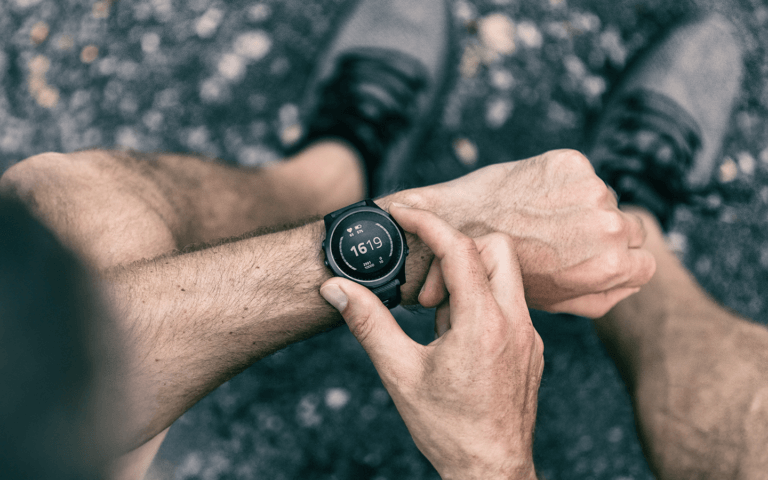Author: Kim Plaza
No one escapes feeling low from time-to-time. Try these expert tips to boost your mood and up your wellbeing game.
According to the mental health charity Mind, 1 in 4 people will experience a mental health problem of some kind each year in England and 1 in 6 people report experiencing a common mental health problem (like anxiety and depression) in any given week. 1,2 Globally, depression remains a leading cause of disability.3 Over the past couple of years, mental health has been reported to significantly diminish as a result of the pandemic, noting higher rates of anxiety, depression and stress.4 So don’t be too hard on yourself if your mental health has taken a hit and consider the following nutritional and lifestyle tips, as a way to lift your mood.
1. Regular and healthy sleep

A common symptom that often accompanies low mood is tiredness and fatigue.5 The knock-on effect of this could be dysregulated sleeping patterns. Additionally, the relationship between mood and sleep seems to be cyclical and therefore they are suggested to affect each other.6
A potential reason for sleep disturbance is a deregulated stress response (which can occur in individuals with low mood).7,8 Our stress hormones will attempt to support us when experiencing stressful events. However these stress hormones can become dysregulated (through continuous or chronic stress).9 Sleep problems may occur because of the influence they have upon sleep-related hormones and we consequently begin to feel ‘wired and tired’. Overtime, we are not be able to shut-off or relax sufficiently to enable sleep.10 After a poor night of sleep, feeling tired could perpetuate stress through trying to keep up with daily demands; inevitably making us feel tired once more.
Keeping to a regular routine during the day where possible may help us regulate our sleep hormones more effectively.11 This includes waking up within the same 90 minute window each day. The sleep pattern (sometimes called the circadian rhythm) is dictated largely by our exposure to daylight. The more our wake-up times fluctuate, the more our hormones will need to adjust, to catch up with us. For example, the stress hormone cortisol naturally increases in the morning to help wake us up, but if we have too much circulating in our body later in the day, it may be harder for the sleep hormone melatonin to have an effect.10 Having a routine keeps us calm, and may prevent spikes in stress hormones and promote wellbeing.
Creating the correct environment before bedtime is also important, as it helps prepare our bodies for rest. Potentially, we could be disrupting our body’s natural circadian rhythm on a regular basis with the use of artificial lighting and looking at computer or television screens late into the night. Blue light is the wavelength of light emitted by these devices and can delay the release of melatonin (our sleep hormone).12 If you are using these devices, many of them now have night settings or available apps which reduce blue light exposure.
2. Physical activity

Low mood and physical activity might initially sound incompatible. After all, it is highly possible that your first thought of the day isn’t to strap on a pair of trainers and ‘go for gold’ around your local neighborhood. There is, however, a significant amount of research in the area of physical activity and mental health. Evidence suggests that exercise may reduce the risk of developing depression, as well as combat depressive symptoms.13,14
Understanding how physical activity helps with supporting mood is currently being investigated, but it is thought to include; improvements in self-esteem, social support, stress resilience and self-efficacy (an individual’s feelings about their own abilities).14
Physical activity is also suggested to influence levels of brain chemicals (neurotransmitters). A healthy supply of these neurotransmitters may then influence brain plasticity and mood.14,15 Brain plasticity is a really important element when talking about mental health, it is concerned with how the neural networks change, grow and reorganize throughout our life, creating new connections for processing and perceiving information. When we exercise, the increased blood flow is thought to encourage brain blood flow and this therefore increases the supply of beneficial chemicals as well as oxygen.16 This change in processing and perceiving information can be useful, as a hallmark feature of low mood can be ruminating about a particular event, as opposed to learning and adapting to an experience. For example, being unsuccessful in a job interview would ideally encourage a person to learn and adapt for the next interview, rather than ruminate upon why the interview did not have a successful outcome.
Using exercise as a way to lift mood alongside other therapies, such as behavior therapy is said to be more effective than behavior therapy alone, this is regardless of the exercise type and intensity.17,18 So consider that any type of physical activity could be of benefit for lifting mood, this could include gardening, walking, yoga or dancing. The important thing is that you decide to make a start, no matter how big or small and try to think of something you might enjoy. Consider a home improvement project, or walking rather than driving to visit a friend or relative, anything to get you moving more than you did before. The idea of ‘doing’ may also have positive effects upon mental health and if you’re out outdoors in nature, then even better, as this has also been highlighted for its beneficial effects. One study review found that nature-based activities were effective for improving depressive mood and reducing anxiety, with the most effective studies being between 8 and 12 weeks. The optimal time to be out doing nature-based activities was between 20 and 90 minutes.19 This means that you don’t necessarily need to be out on an expedition, but just 20 minutes a day in some green space, might help to contribute to lifting mood.
3. A thriving gut microbiome

Problems with digestion are frequently reported in people with depression and/or anxiety.20 So much so, that some researchers have suggested that making changes to benefit digestive function could in fact improve outcomes in mood related diagnoses.20 The gut is often described as a second brain, with a lot of research now confirming the gut-brain connection (known as the gut-brain axis).21 The gut-brain axis is commonly mentioned to use three routes of communication; the immune, nervous and hormonal systems. People with low mood may have higher levels of inflammation within their system and this could involve inflammation of the gut. Where inflammation occurs, our digestive function may become impaired, meaning that we may not absorb nutrients as effectively and we may also experience symptoms such as bloating, fatigue, food sensitivities and headaches.22 Symptoms will of course vary between individuals and some people may not experience digestive upset at all.
An additional factor in gut and mental health is the balance of microorganisms within the gut. Interestingly, having an imbalance of beneficial gut bacteria has been associated with mood disorders,23 therefore looking after your gut could be a useful strategy in combating low mood.
When we consume foods that are high in certain types of fiber, known as prebiotics, our gut bacteria ferment these fibers in the gut. As they ferment these foods, they produce a whole range of beneficial compounds which can interact with other body systems – including the brain.21 Some of these compounds are neurotransmitters, that influence mood, cognition and sleep.24 Therefore consuming foods that are helpful for your gut microflora, could indirectly be supporting brain chemicals related to mood. Some prebiotic foods include garlic, onions, Jerusalem artichokes, slightly green bananas, and chicory root.
Another way to influence the gut microbiome is to support the balance of microorganisms in the gut. As an imbalance of gut bacteria has been associated with depressive symptoms, it could be helpful to support the types and distribution of beneficial bacteria.23,25 This can be done by consuming traditionally fermented food such as kimchi, sauerkraut, kefir, kombucha and tempeh. Many of these are now widely available in stores but have a look for a local health food shop to see a wide variety.
Alternatively, you might want to consider taking a live bacteria supplement such as Bio-Kult. These products contain standardized levels of beneficial bacteria and can easily be studied to evaluate their effects. The strains of bacteria within Bio-Kult Brighten were recently used in scientific study investigating their effects in people with self-reported low mood. After taking the capsules for four weeks, individuals reported significant improvements in their mood, concentration and tiredness.26 It could therefore be an easy option, alongside other strategies to improve symptoms of low mood. Bio-Kult Brighten contains 14 different strains of beneficial bacteria, but also contains nutrients such as vitamins D, B6 and B12, along with zinc and magnesium. Many of these nutrients are used for their ability to contribute to psychological health and the reduction of tiredness and fatigue.27
4. ‘Real’ healthy food

The food that we eat and the way that we eat, may influence our mood. This may be familiar to you if you’ve ever been ‘hangry’! Drops in blood sugar can cause rises in the stress hormone cortisol and consuming refined carbohydrates and sweetened food or drinks may exacerbate this rollercoaster of energy and mood. Opting for wholegrains and sufficient protein in your diet may help to temper blood sugar peaks and troughs and therefore improve mood.28
Consuming a variety of micronutrients may also support neurochemicals related to mood, for example B vitamins are found in many wholegrains, green leafy vegetables, meat, fish as well as nuts and seeds. B vitamins are required for the synthesis of neurotransmitters serotonin, noradrenaline and dopamine;29,30 these are important for the regulation of mood, energy, and the reward system.
Try to incorporate some healthy eating plans into the week, this could initially be as basic as cooking one meal each week, particularly if you have been relying on convenience foods. Our body is reliant upon good quality protein sources, therefore grass-fed meat, oily fish, and plenty of legumes could be added to increase a meal’s nutritional content.
If the idea of cooking is really too much, consider looking into meal boxes that deliver measured out ingredients, so you only need to follow instructions and leave the thinking to someone else. Alternatively, batch cooking can be useful because you only need to be cooking the once, to then have many meals to rely on at a later time; this could include simple pasta or curry sauces. Following a Mediterranean diet has also been shown to have beneficial effects against depressive symptoms.31,32 So regardless of where you begin, whether it’s starting to make meals from scratch (just once or twice a week), to ordering meal boxes, or batch cooking, making a move towards home-cooked meals with colorful vegetables, is a step in the right direction.
5. Get in touch with people

Considering that low mood could impact our sleep, energy, and digestive function, it would be understandable to expect a reduction in sociability. A dysregulation in all of these factors could result in a person feeling less motivated to carry out their usual activities (which may include personal hygiene, eating well, and staying active). As a result, an individual may experience reduced self-confidence, demotivation, and an inability to feel pleasure from activities usually enjoyed (known as anhedonia). Sadly, this seems to be another example of a bi-directional influence, where depressive symptoms may result in reduced socialization and vice versa (reduced socialization may lead to depressive symptoms).33,34
A recent study found that being part of a social group was effective in managing mild to moderate depression.35 These social groups included arts-based groups, exercise groups, Qigong and meditation classes, a gardening group and a creative play group for mothers and infants. The effects of taking part in these groups upon depressive symptoms were reported to vary, but ranged from small to very large.35 Therefore, it may be that taking part in an activity with people around, could benefit our mental health. If committing to joining a social club isn’t quite possible yet, consider dropping a message to a friend of relative instead.
Talking with a peer, friends, or family can initially seem daunting, however given the number of people over the past couple of years reporting increased feelings of anxiety, depression and stress, you may actually be opening up a conversation that could help another, as well as you. So, try to be honest about your mood and remember that talking to your GP or health professional is another valuable option. Guidance on how to find a practitioner is available from MIND’s website:






